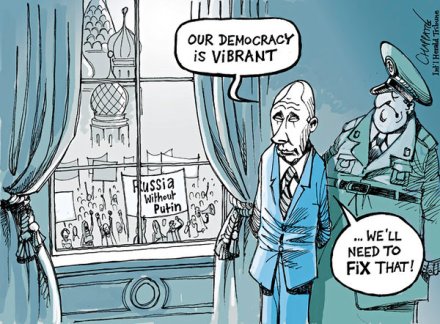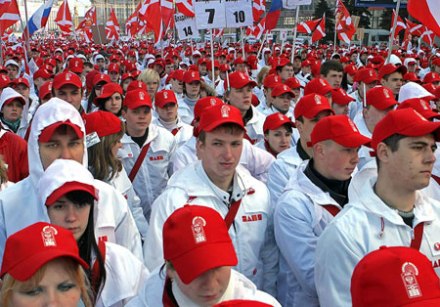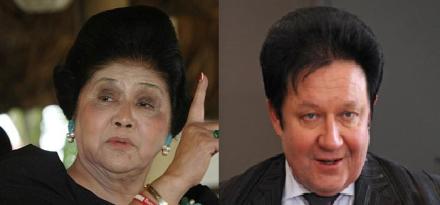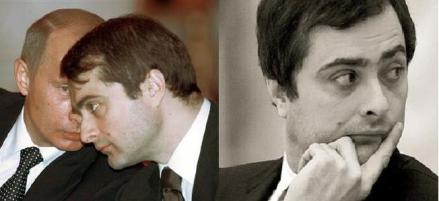
Putin’s fears of the Orange Revolution
News media this week reported that President Putin has again made his annual visit to a nationalistic-inspired youth summer camp, situated next to Lake Seliger northwest of Moscow, but who are the youths and what are Putin’s motives?
Late in the autumn of 2004 at the time of the Ukrainian presidential election, which was largely considered by the electorate to be riven with wide scale voter intimidation and corruption, the Kremlin watched nervously from next door in Russia, as the momentum of the Orange Revolution built and the position of the pro-Russian incumbent president, Viktor Yanukovych looked increasingly shaky.
The eye of the Orange Revolution storm was in Kyiv, with the movement organising a sustained campaign of resistance, civil unrest and widespread strikes. This was sparked by international election monitors and key organisations in Ukraine deeming that the election had been rigged in favour of Yanukovych. The massive protests sparked a legal challenge to the validity of the vote and Ukraine’s supreme court ordered a re-run in December of that year. With a near forensic scrutiny by international and local election monitors, the second run-off was declared to be fair and free, giving an outright victory for the ethnic Ukrainian Yushchenko, gaining a 53% vote-share, with Yanukovych getting 44%. Yushchenko was declared president-elect and on 23 January 2005 the Orange Revolution faded away as he was sworn in as President.
Putin and his ex-KGB cronies watched all of this in horror. Could it happen in Russia? Was there the potential for an Orange Revolution at the Russian presidential elections in 2008? This would be a catastrophe for Putin as he had to stage manage a handover of power to Dmitry Medvedev to create the space to comply with Russian law concerning the maximum of two consecutive periods of presidency. He had to relinquish power and this meant that alarm bells rang loudly in the Kremlin.

Nashi youth on the move
The birth of ‘Nashi’ (The Anti-fascist, Democratic Youth Movement)
After its success in Kyiv, the Orange Revolution was repackaged as a fascist movement by the Kremlin. The same message was echoed by government forces in Belarus, as it suited their convenience too. The Nashi organisation was officially announced on 1 March 2005 by pro-Putin apparatchiks who sought to harness the youth of Russia and their focus to pro-government advantage. It is almost certain that this development was a bulwark against ‘fascism’, a reaction against Ukraine’s Orange Revolution and the youth-led street protests that handed the presidency to pro-Western candidate Viktor Yushchenko.
The name Nashi means ‘our team’, or just ‘ours’. The organisation is supposed to be funded from pro-government private enterprise, who are unlikely to refuse in the circumstances. It is also widely believed that Kremlin bankrolls the project:
“Companies and business managers who care about Russia help us”, is Alissa’s answer. Nashi’s critics and opponents would prefer to speak about phone-calls from Kremlin instructing Russian corporations and businessmen to pay money to the friendly youth organisation, an offer they would find it difficult to refuse.
Those who set up Nashi looked at the components of anti-government protest movements in other former Eastern-bloc states and by
“using some of the ‘social technologies’ applied successfully by protest movements in Serbia (2000), Georgia (2003-04), and Ukraine (2004-05). They understood – to take just one element – the importance of music for the youth movement. That is how “Nashi rap” was invented.”

An image of Putin’s Nashi summer camp
The organisation provided hats and jackets to show both solidarity and loyalty to the Putin regime, banners, flags and organised parades and marches as well as summer camps. Remember, this is not a free organisation, not in any free-world understanding of the term, because although the youths in this organisation are not controlled, nor is their freedom of speech restricted, but no one is going to join an organisation that is roundly described as ‘Putinophile’ and then mock or denigrate Putin, are they?

A Nashi street rally
Nashi worked well for Putin from 2005 to 2011, focussing youth in a distinctly pro-government genre and the Kremlin ensured that the organisation was well funded and interlocked with the state in a way that went right to Putin himself – hence the summer camps. Nashi even set up a civilian police support to assist the police, clad in black and enforcing Russian ‘morals’, which generally means restricting the freedom of minorities. The youths were gradually inculcated with the belief that Putin was a national hero and comments about him in the Nashi movement romanticised his strengths. This was part of the speech of a prominent, pro-Putin activist, Vasily Yakemenko:
“I remember the 1990s, when (Boris) Berezovsky controlled the Duma. When together with (Mikhail) Khodorkovsky, in order to make their billions, they provoked the war in Chechnya. Young people like you were sent there and did not return. Our Russian national budget had to be approved by the International Monetary Fund in the United States. All of this has changed with Vladimir Putin.” (Vasily Yakemenko, the Nashi movement’s founder and leader)
He draws an image of the Putin that is wholly reminiscent of
“a hero, even a superman. Without Putin, Russia is doomed. The December 2007 election, Yakemenko explains, is not about the parliament: it is a vote for the supreme national leader. The whole world has to see that Russia is unanimous in its support for Vladimir Vladimirovich.”
Nashi have been used to discredit or protest against the opposition parties and human rights activists. Ugly scenes have taken place and fights have broken out between Nashi commissars and Nemtsov supporters – Boris Nemtsov is a Russian liberal politician and one of the leaders of the Solidarnost movement. He is a vociferous critic of Vladimir Putin.

Nashi supporters trample on posters showing opposition images
The organisation is also used tactically to counter what Russian nationalists feel is disrespect to Russia by other countries: Shortly after the city authorities in the Estonian capital of Tallinn had taken down a statue of a WW2 Soviet soldier in April 2007, government offices and agencies, banks and media companies were hit by a colossal surge of spam, billions of emails, that disrupted the dealings of those organisations and businesses affected, placing a massive strain on Estonia’s financial markets. Most of the attack originated in the Russian Federation.
Protests took place on the E77 main highway between Russia and Estonia, with Nashi youth protesters putting up barriers and a huge hoarding advising motorists:
You are now driving towards fascist Estonia
The reprisals in Moscow were not virtual, but direct and menacing as a Nashi crowd turned up at a press conference by Estonia’s ambassador and were only beaten into a retreat by the ambassador’s security cadre sprayed the mob with pepper spray.

Evidence of the ‘fascist’ accusation against Estonia
In contrast, Vladimir Putin commemorated the former Soviet victory over Nazi Germany, officiating at a military parade and using his speech to condemn the expansion of NATO, the war in Iraq and the defence missile programmes of western states he said
“Moreover, in our time, these threats are not diminishing,” he said. “They are only transforming, changing their appearance. In these new threats – as during the time of the Third Reich – are the same contempt for human life and the same claims of exceptionality and diktat in the world.”
You may recall that the Kremlin have persistently and roundly accused the Ukrainian government and its supporters of being ‘fascist’ or behaving like Nazi Germany. This is an oft-used allusion by the Russian regime: it is Putin’s way of blackening those of whom he does not approve.
To be continued next week.








